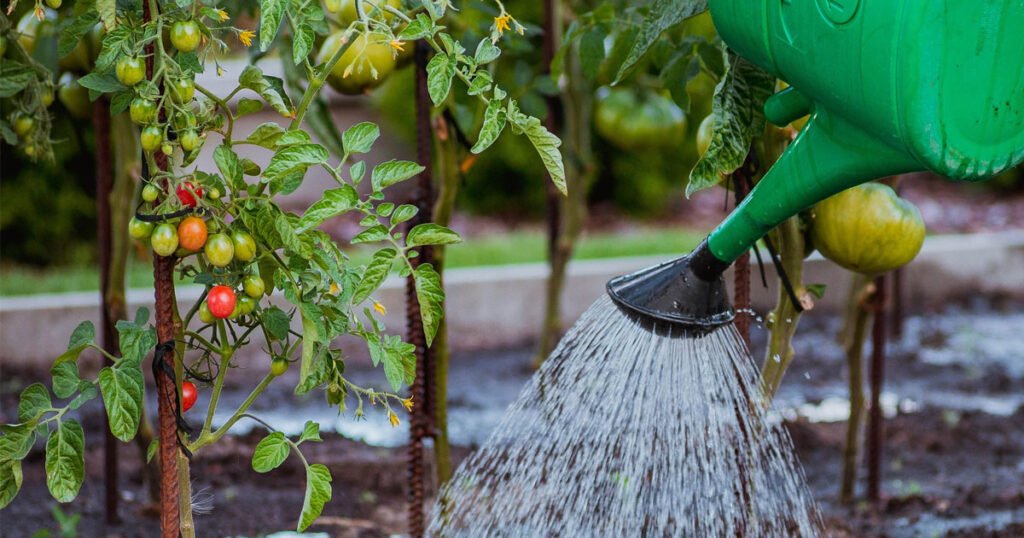Introduction
Kannák, a term derived from the Hungarian language, refers to containers or vessels, often used for storing liquids like water, oil, or fuel. While these containers might seem simple, their applications and significance span across various industries and cultures. From agriculture and manufacturing to household use, kannák play a crucial role in the safe storage and transport of essential materials. In this article, we’ll dive into the diverse uses of kannák, their benefits, real-world applications, and how they have evolved to meet modern-day challenges.
What Are Kannák?
Definition and Overview
Kannák are traditionally designed containers used for storing and transporting liquids. The most common types are metal, plastic, or glass vessels, often found in households, industries, and agricultural settings. Historically, they were primarily used in rural areas for carrying water or milk. However, modern versions are designed with advanced materials to accommodate various liquids, including chemicals and fuels. In some regions, they are known for their robust construction and ease of use, which makes them indispensable in both rural and urban settings. Visit here for more details allenstoneware.
Types of Kannák
There are several types of kannák, each serving specific purposes. The three primary categories are:
- Plastic Kannák: Lightweight and versatile, ideal for household and agricultural use. They are often used for storing water, detergents, or fertilizers.
- Metal Kannák: Commonly used for transporting fuel or hazardous materials. These are highly durable and resistant to impact.
- Glass Kannák: Less common but still used for specialized purposes like storing chemicals or high-quality oils where purity is important.
Each type is crafted to meet the demands of its specific use, ensuring durability, safety, and efficiency in handling liquids.
Importance and Benefits of Kannák
Efficient Storage Solutions
One of the primary advantages of kannák is their ability to efficiently store liquids. Whether you need to transport water in rural areas or store fuel in an industrial setting, these containers are designed to handle the job safely. Their various sizes and material types allow users to select the appropriate option for their needs, minimizing waste and spillage.

Environmental Impact
In recent years, the environmental impact of kannák, particularly plastic ones, has come under scrutiny. However, advancements in material science have led to more eco-friendly versions. Recyclable plastic and biodegradable materials are now used to produce kannák, reducing their environmental footprint. Furthermore, metal kannák are durable, long-lasting, and can be reused for years, decreasing the need for disposable alternatives.
Safety and Reliability
Kannák are designed to safely contain and transport liquids, reducing the risk of leaks, contamination, or accidents. Metal kannák, in particular, are often used for transporting fuel or chemicals, where safety is paramount. Many modern kannák come with features like secure locking mechanisms and airtight seals, ensuring that their contents remain secure during transportation.
Economic Efficiency
In industries such as agriculture and manufacturing, kannák provide a cost-effective solution for storing and distributing liquids. Their reusability and durability make them a long-term investment, especially in settings where large quantities of liquids are handled. By using kannák, businesses can reduce the need for disposable containers, cutting down on costs and waste.
Applications and Use Cases
Agriculture
In agriculture, these are indispensable for storing and transporting water, pesticides, fertilizers, and animal feed supplements. Plastic are widely used in this sector due to their lightweight nature and resistance to chemicals. Farmers rely on these containers to manage their resources effectively, ensuring that crops and livestock receive the necessary nutrients without contamination.
Industrial Use
The industrial sector uses metal and plastic kannák to store and transport various liquids, including fuels, lubricants, and chemicals. In manufacturing plants, these are often designed with specific safety standards to prevent leaks or spills that could damage equipment or pose a health risk. The oil and gas industry, in particular, relies on specialized kannák for safely handling and distributing fuel.
Household Use
In many households, these are used for storing water, especially in areas where access to clean drinking water is limited. They are also useful for carrying cleaning supplies, detergents, and oils. The flexibility of plastic kannák makes them ideal for everyday household tasks, while glass versions are preferred for food-grade storage, like olive oil or vinegar.
Automotive and Fuel Storage
It, particularly metal ones, are commonly used in the automotive industry for storing and transporting fuel. Drivers, mechanics, and farmers rely on fuel to safely store gasoline, diesel, or oil. These containers are designed to be leak-proof and resistant to the corrosive effects of fuel, ensuring that the contents remain stable over long periods.
Emergency and Disaster Relief
In regions affected by natural disasters, kannák play a crucial role in providing emergency water and fuel supplies. Relief organizations use large quantities of these containers to ensure that clean water and necessary liquids are available to those in need. Their portability makes them ideal for quick distribution in areas without reliable infrastructure.
Challenges and Solutions in Using Kannák
Environmental Concerns
One of the main challenges in the widespread use of plastic kannák is their environmental impact. Many plastic containers, when improperly disposed of, contribute to pollution and landfill waste. However, new solutions are emerging in the form of biodegradable plastics and recycling programs that encourage the reuse of plastic kannák. Manufacturers are also focusing on producing more durable containers that last longer, thus reducing the frequency of disposal.
Durability Issues
Although plastic are lightweight and convenient, they are prone to wear and tear over time. They can crack or degrade, especially when exposed to harsh weather conditions. To combat this, manufacturers are developing plastic using advanced polymers that are more resistant to UV light and temperature fluctuations. Metal, while more durable, can rust if not properly maintained, so solutions like corrosion-resistant coatings are being applied to extend their lifespan.
Safe Handling of Hazardous Materials
When transporting hazardous materials such as fuel or chemicals, safety is a major concern. It must meet strict regulatory standards to prevent accidents during transport. Metal kannák, which are often used for hazardous materials, now come equipped with enhanced safety features like vented caps and fire-resistant coatings. These improvements ensure that hazardous liquids are contained securely, reducing the risk of spills or explosions.
The Evolution of Kannák Design
Traditional vs. Modern Kannák
These were simple vessels, often made of clay or metal, used primarily in rural areas for water storage. Over time, as industrial needs grew, so did the complexity of kannák design. Modern kannák are more specialized, with features such as ergonomic handles, secure caps, and pressure-relief valves for storing volatile liquids. This evolution reflects the changing needs of both consumers and industries.
Innovations in Materials
The development of advanced materials has significantly improved the functionality of it. For instance, high-density polyethylene (HDPE) is now widely used in the production of plastic kannák due to its strength, flexibility, and chemical resistance. Similarly, stainless steel is becoming popular for industrial because of its resistance to corrosion and ability to handle high temperatures. These innovations ensure that kannák can withstand harsh conditions while remaining reliable.
Customization for Specific Industries
Today, these are often customized for specific industries. In agriculture, for example, large-capacity plastic with UV resistance are common for outdoor use. Meanwhile, in the automotive sector, metal fuel with spouts and safety mechanisms are essential for safely refueling vehicles. This customization ensures that each industry has the right tools to handle their particular liquid storage and transportation needs.
The Future of Kannák: Trends and Innovations
Eco-Friendly Designs
With the growing focus on sustainability, the future of it lies in eco-friendly designs. Manufacturers are exploring the use of recycled materials and biodegradable plastics to reduce the environmental impact of these containers. In addition, reusable kannák are becoming more popular, as they allow businesses and households to cut down on single-use plastics.
Smart Kannák
Another exciting trend is the development of smart kannák, equipped with sensors that monitor the levels and condition of the liquid inside. These can send real-time data to users, helping them manage resources more efficiently. For industries like agriculture, this can mean better water management, while in manufacturing, it could prevent costly leaks or spills.
3D Printing and Customization
As 3D printing technology advances, it’s becoming easier to create customized it for niche applications. This allows businesses to design containers that meet specific size, shape, and material requirements. 3D-printed kannák are also more affordable and can be produced on-demand, reducing waste and improving efficiency in production processes.
Conclusion
Kannák, whether made of plastic, metal, or glass, play an essential role in various sectors, from agriculture and industry to household use. Their durability, safety features, and versatility make them indispensable for the storage and transport of liquids. As innovations continue to improve their design, it will remain a vital tool in modern society. With eco-friendly designs, smart features, and customizable solutions on the horizon, the future of it looks promising for both consumers and businesses.
FAQs
1. What are kannák typically used for?
It are primarily used for storing and transporting liquids like water, fuel, chemicals, and food products in various industries.
2. Are plastic kannák environmentally friendly?
Traditional plastic kannák have a negative environmental impact, but newer models are made from recyclable or biodegradable materials to reduce waste.
3. How can it be customized for specific industries?
It can be designed with industry-specific features, such as UV resistance for agriculture or spouts and safety mechanisms for fuel storage in the automotive sector.
4. What are the benefits of it?
Metal kannák are highly durable, resistant to impact, and can safely store hazardous materials like fuel and chemicals.
5. What innovations are shaping the future of it?
Smart kannák with sensors and eco-friendly materials like biodegradable plastics are emerging trends, along with 3D-printed, customizable designs for various applications.



